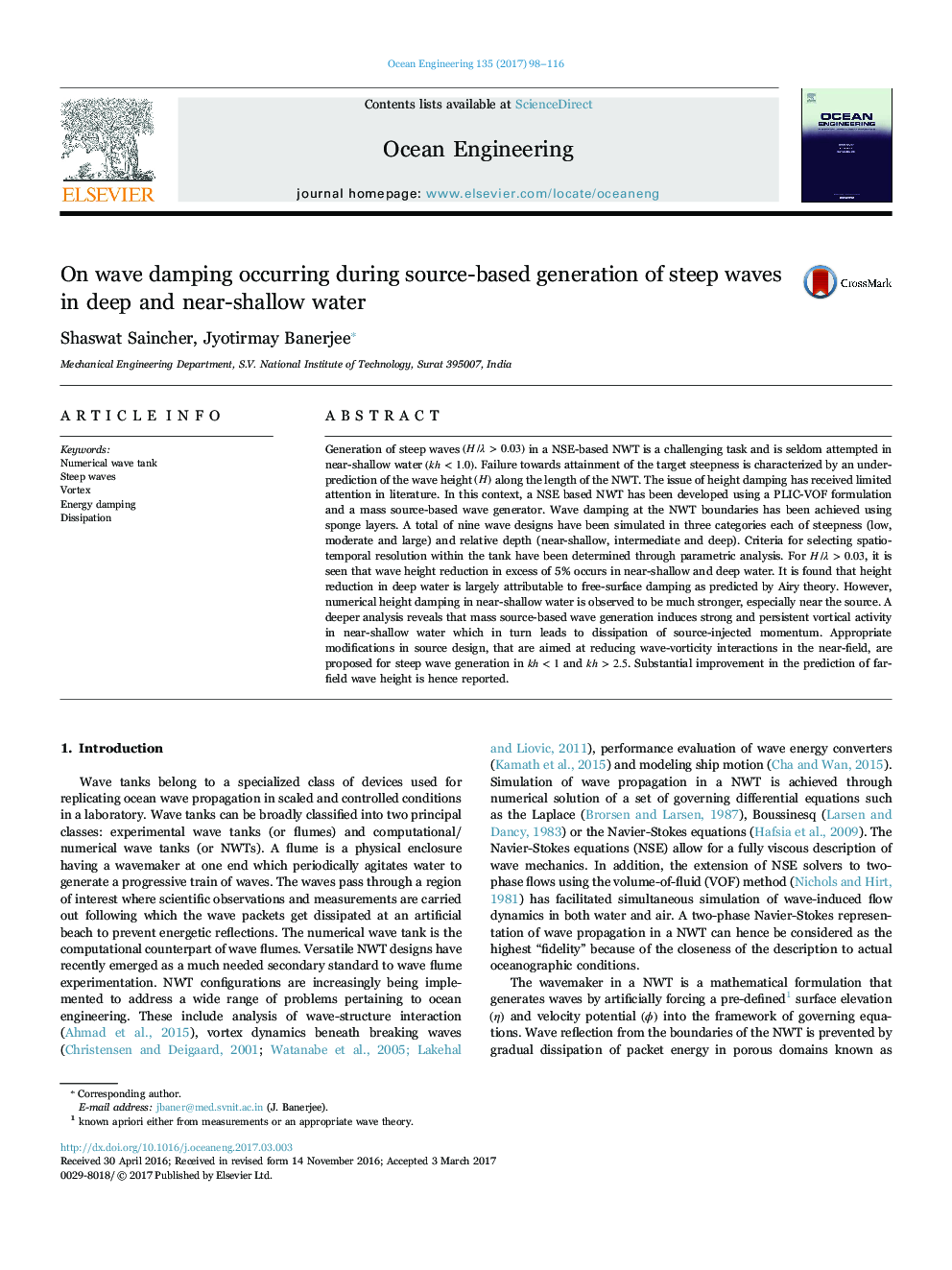| Article ID | Journal | Published Year | Pages | File Type |
|---|---|---|---|---|
| 5474561 | Ocean Engineering | 2017 | 19 Pages |
Abstract
Generation of steep waves (H/λ>0.03) in a NSE-based NWT is a challenging task and is seldom attempted in near-shallow water (kh<1.0). Failure towards attainment of the target steepness is characterized by an under-prediction of the wave height (H) along the length of the NWT. The issue of height damping has received limited attention in literature. In this context, a NSE based NWT has been developed using a PLIC-VOF formulation and a mass source-based wave generator. Wave damping at the NWT boundaries has been achieved using sponge layers. A total of nine wave designs have been simulated in three categories each of steepness (low, moderate and large) and relative depth (near-shallow, intermediate and deep). Criteria for selecting spatio-temporal resolution within the tank have been determined through parametric analysis. For H/λ>0.03, it is seen that wave height reduction in excess of 5% occurs in near-shallow and deep water. It is found that height reduction in deep water is largely attributable to free-surface damping as predicted by Airy theory. However, numerical height damping in near-shallow water is observed to be much stronger, especially near the source. A deeper analysis reveals that mass source-based wave generation induces strong and persistent vortical activity in near-shallow water which in turn leads to dissipation of source-injected momentum. Appropriate modifications in source design, that are aimed at reducing wave-vorticity interactions in the near-field, are proposed for steep wave generation in kh<1 and kh>2.5. Substantial improvement in the prediction of far-field wave height is hence reported.
Keywords
Related Topics
Physical Sciences and Engineering
Engineering
Ocean Engineering
Authors
Shaswat Saincher, Jyotirmay Banerjee,
